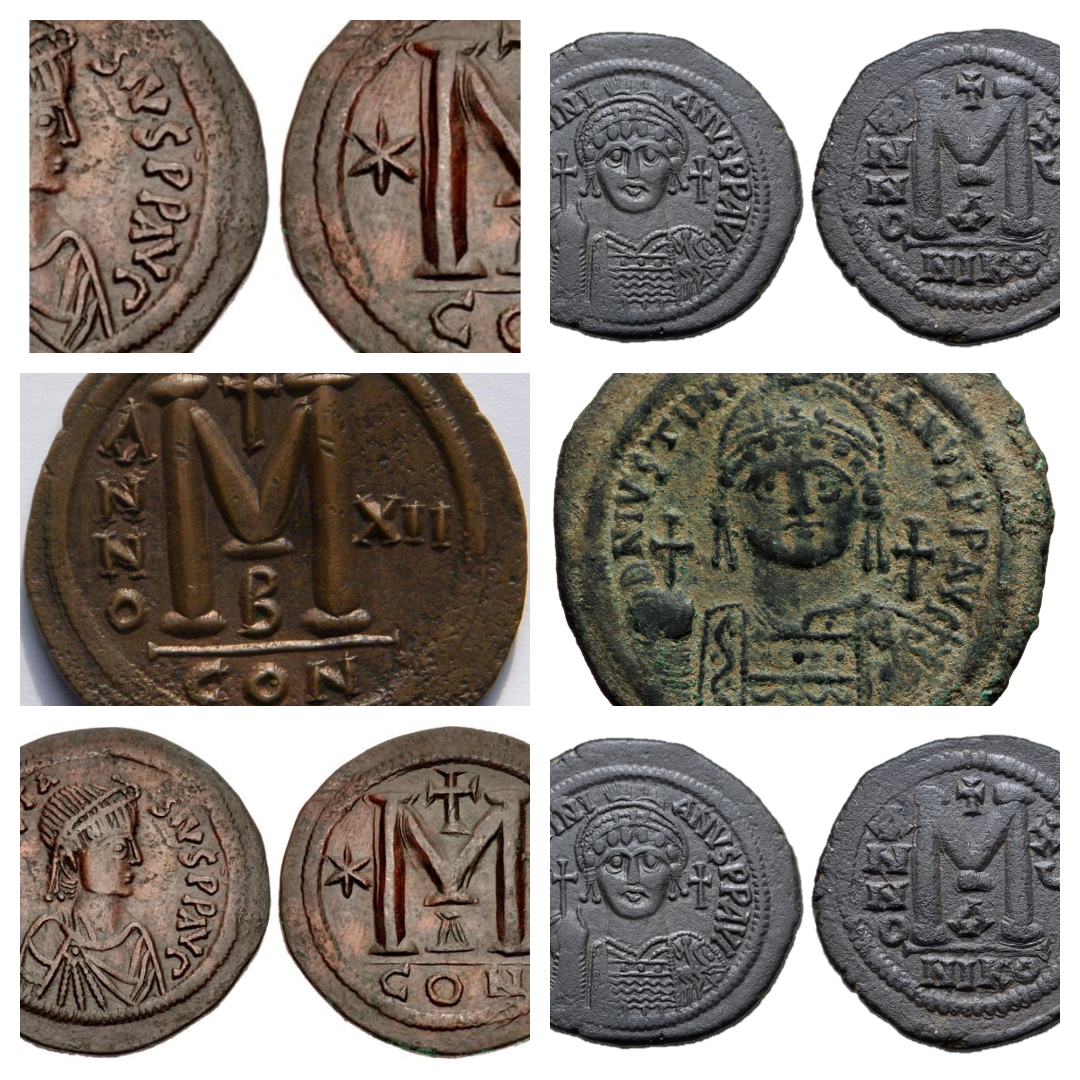What Are the Symbols on Byzantine Coins? A Collector’s Perspective
If you’ve ever looked closely at a Byzantine coin, you’ve probably noticed some strange letters and symbols — things like M, B, crosses, or even what looks like a mix of Greek and Latin script. At first glance, it might seem confusing, but once you know what you’re looking at, it all starts to tell a story.
Let’s break it down together, coin by coin, symbol by symbol.
Why Symbols Matter on Byzantine Coins
Byzantine coins weren’t just money. They were statements — about faith, power, legitimacy, and even military victory. These coins came from an empire deeply rooted in Christianity, ruled by emperors who saw themselves as God’s chosen, and spread across continents. So, naturally, they wanted every little detail on their coins to carry meaning.
And unlike modern coins that say “50 cents” or “1 euro,” Byzantine coins used letters and symbols to say what they were worth, who made them, and what they stood for.
🔠 What Does the “M” Mean?
Let’s start with the big one: M. It’s one of the easiest symbols to spot — bold, centered, and often larger than anything else on the coin.
-
M = 40 nummi
This letter stands for the largest denomination of bronze coins in circulation. It’s basically saying, “This coin is worth 40 units.” -
You’ll also see other letters like:
-
K = 20 nummi
-
I = 10 nummi
-
E = 5 nummi
-
These letters made it easy for merchants and the public to quickly identify the coin’s value — practical and smart for the time.
🧭 Fun fact: The coins with the “M” are known as folles, and they were the workhorse of Byzantine everyday commerce.
🔤 What About the “B”?
Now the letter B gets a little more layered.
-
Sometimes B is used as a denomination marker, usually meaning 2 nummi.
-
Other times, B is part of a title, like BASILEUS (Greek for “emperor”).
-
It could even appear in blessing inscriptions, especially on later coins, sometimes alongside religious phrases.
So you have to look at the whole context of the coin — placement, size, and what’s around it — to understand which “B” you’re dealing with.
✝️ Christian Symbols on Coins
Now we get to what really sets Byzantine coins apart from their Roman predecessors — the faith-driven imagery.
Common Religious Symbols:
-
The Cross
You’ll see this in many forms: on steps, in the emperor’s hand, on shields, or just standing tall in the center of the coin. -
Chi-Rho (☧)
This one looks like a “P” over an “X” — it’s an early Christian symbol that means “Christ.” It shows up a lot on 4th and 5th-century coins. -
Jesus Christ
Later coins, especially from the 10th century onward, often feature Christ Pantocrator — Jesus holding a Gospel book and making a gesture of blessing. -
Virgin Mary
She’s usually shown in prayer or holding the infant Christ, often surrounded by stars or rays.
👑 The Emperor Isn’t Just a Man — He’s Chosen by God
It’s common to see the emperor holding a cross, wearing a crown, or even standing next to Christ. These images were more than decoration — they were meant to show that the emperor ruled with divine approval.
And when coins show two emperors, it’s often a father-son co-rulership — a clever way to show stability and succession.
🏛 Mint Marks and Inscriptions
Keep an eye out for letters that tell you where the coin was made:
-
CON = Constantinople
-
ANT = Antioch
-
THESS = Thessalonica
You’ll also see abbreviated Greek phrases like:
-
“XRISTUS BASILEU BASILEUON” – Christ, King of Kings
-
“DN [Emperor’s Name] PP AV” – Our Lord [Emperor] Pious, Perpetual Augustus
🧠 Why This All Matters
These symbols weren’t random. They were carefully chosen to send a message:
-
To the citizens: “Your ruler is chosen by God.”
-
To foreign powers: “This coin is pure, and this empire is strong.”
-
To future historians (like us): “Here’s what we believed.”
Final Thoughts from One Collector to Another
Learning to decode Byzantine coins isn’t just about spotting letters and symbols — it’s about understanding a mindset. The “M” isn’t just a number. The cross isn’t just decoration. Every detail is part of a narrative — one that’s lasted more than a thousand years.
And the best part? You don’t need to be a scholar to appreciate it. You just need to slow down, look closely, and enjoy the story in your hands.
